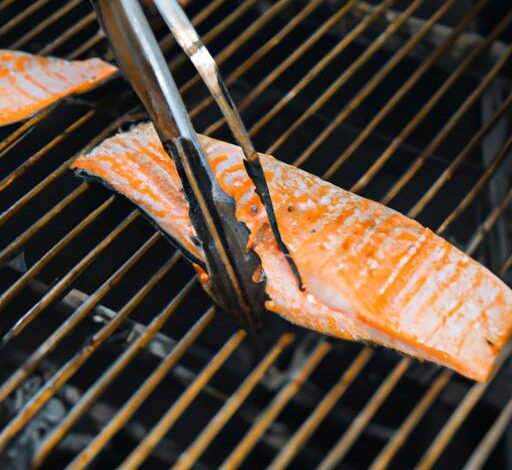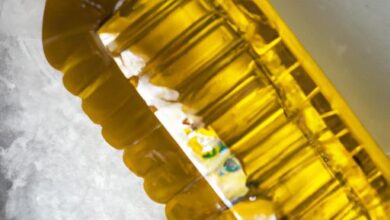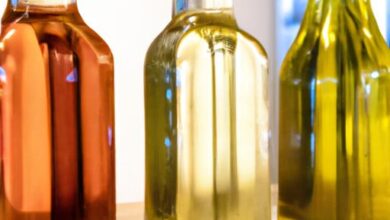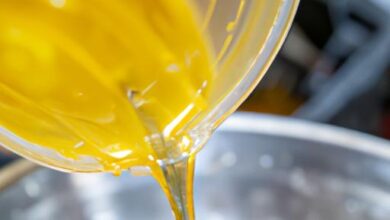Will Cooking Kill Salmonella: Understanding the Importance of Addressing Salmonella in Cooking

Salmonella, a common bacterium responsible for foodborne illnesses, poses a significant risk to our health. As we navigate the realm of culinary delights, it becomes crucial to understand the measures we can take to protect ourselves and our loved ones. In this article, we embark on a journey to determine if cooking can effectively kill salmonella. So, let’s dive in and uncover the truth together.
Cooking plays a vital role in ensuring food safety, and addressing salmonella is no exception. Salmonella contamination can occur in various foods, including poultry, eggs, meat, and even fruits and vegetables. Consuming undercooked or raw contaminated food can lead to unpleasant symptoms such as diarrhea, abdominal cramps, and fever. In severe cases, it can even result in hospitalization.
The primary purpose of this article is to shed light on the effectiveness of cooking in eliminating salmonella bacteria. We will explore the heat sensitivity of salmonella and the temperatures required to render it harmless. Additionally, we will delve into different cooking methods and their ability to eliminate this pesky bacterium.
Now, let’s embark on this culinary quest and uncover the truth about whether cooking can truly kill salmonella. Together, we’ll explore the science behind it and equip ourselves with knowledge to ensure our meals are not just delicious, but also safe. So, tighten your apron strings, sharpen your knives, and let’s embark on this gastronomic adventure!
Understanding Salmonella
What is Salmonella and its Potential Health Risks?
Salmonella is a type of bacteria that can cause foodborne illness in humans. It belongs to the Enterobacteriaceae family and is commonly found in the intestines of animals, birds, and reptiles. There are different strains of salmonella, with Salmonella enterica being the most prevalent in causing illness.
The potential health risks associated with salmonella contamination should not be underestimated. Consuming food contaminated with this bacterium can lead to salmonellosis, a gastrointestinal infection. Symptoms typically include diarrhea, abdominal cramps, nausea, vomiting, and fever. In severe cases, salmonellosis can result in dehydration and may require medical intervention.
Common Sources of Salmonella Contamination
Salmonella can be found in various food sources, making it essential to be aware of its common origins. Poultry, such as chicken and turkey, is a significant carrier of salmonella. Eggs, especially when raw or undercooked, can also harbor the bacteria. Other high-risk foods include raw or undercooked meat, unpasteurized milk and dairy products, and even contaminated fruits and vegetables.
Additionally, cross-contamination can occur when raw meat or poultry comes into contact with other foods, utensils, or surfaces. It is crucial to handle and store food properly to prevent the spread of salmonella. Practicing good hygiene, such as proper handwashing and avoiding cross-contamination, plays a crucial role in reducing the risk of salmonella-related illnesses.
By understanding the nature of salmonella and being aware of its common sources of contamination, we can take proactive measures to minimize the risk of infection. Let’s move forward and explore how heat sensitivity of salmonella plays a role in eliminating this bacterium through cooking methods.
Heat Sensitivity of Salmonella
Heat Sensitivity: Exploring the Vulnerability of Salmonella
When it comes to combating salmonella, understanding the heat sensitivity of this bacteria is crucial. Salmonella bacteria are not invincible to heat, and specific temperatures can render them harmless. Let’s delve into the science behind the heat sensitivity of salmonella.
Research Findings: Unveiling the Ideal Temperature
Extensive research has been conducted to determine the temperature at which salmonella is effectively killed during cooking. Studies consistently show that temperatures above 165°F (74°C) are necessary to eliminate salmonella bacteria. At this threshold, the heat disrupts the bacteria’s cellular structure, rendering it unable to survive or cause harm.
Cooking Accuracy: Achieving Salmonella-Free Meals
To ensure the complete elimination of salmonella, it is vital to accurately measure and maintain the cooking temperature. Utilizing a food thermometer is an invaluable tool in achieving precision. Whether you’re grilling chicken, sautéing ground meat, or poaching eggs, make sure to verify that the internal temperature reaches the recommended threshold.
Safety Tip: Different Foods, Different Temperatures
It’s important to note that the required cooking temperature may vary depending on the type of food you’re preparing. For example, poultry, such as chicken or turkey, should reach an internal temperature of 165°F (74°C), while ground meats, including beef and pork, should reach 160°F (71°C). Eggs should be cooked until the yolk and white are firm, ensuring a temperature of 160°F (71°C).
By understanding the heat sensitivity of salmonella and adhering to the appropriate cooking temperatures, you can ensure your meals are safe and free from this potentially harmful bacterium. So, let’s wield the power of heat and conquer salmonella, one delicious dish at a time!
Cooking Methods and Salmonella Elimination
When it comes to eliminating salmonella through cooking, understanding the various methods and their effectiveness is key. Let’s explore some commonly used cooking techniques and how they contribute to salmonella elimination.
Baking: A Delicious Path to Safety
Baking, a favorite method for preparing a wide range of dishes, can also help eliminate salmonella. The high temperatures reached in the oven can effectively kill the bacteria, making it a reliable cooking technique. When baking foods such as poultry, it is essential to ensure that the internal temperature reaches a minimum of 165°F (74°C) to guarantee the elimination of salmonella. So, whether you’re whipping up a succulent roast chicken or a hearty casserole, rest assured that baking can contribute to your safety.
Frying: A Sizzling Solution
Frying, the beloved cooking method that adds a crispy touch to our meals, can also aid in eliminating salmonella. When food is immersed in hot oil, the high temperatures effectively kill the bacteria. However, it is crucial to ensure that the internal temperature of the food reaches the recommended level. For example, frying poultry requires an internal temperature of at least 165°F (74°C) to ensure salmonella elimination. So, the next time you’re craving some golden and crispy delights, remember that frying can help you enjoy your meal without worrying about salmonella.
Boiling: A Boon for Safety
Boiling, a simple yet powerful cooking technique, can play a significant role in eliminating salmonella. When food is immersed in boiling water, the high temperature helps destroy the bacteria, ensuring safe consumption. To effectively eliminate salmonella, it is recommended to boil food such as eggs, meat, or seafood until they reach the appropriate internal temperature. For instance, eggs must be boiled for at least 9-12 minutes to eliminate any potential salmonella. So, whether you’re preparing a comforting soup or boiling eggs for a nutritious breakfast, rest assured that boiling can contribute to your safety.
By understanding the recommended cooking temperatures and times for different types of food, we can ensure that salmonella bacteria are effectively eliminated. Whether you prefer baking, frying, or boiling, each method presents an opportunity to embark on a culinary adventure while keeping foodborne illnesses at bay. So, embrace your favorite cooking techniques and savor the flavors of safety and satisfaction.
Importance of Proper Food Handling
Emphasizing the Significance of Proper Food Handling Practices
When it comes to preventing salmonella contamination, proper food handling practices play a crucial role. By following a few simple guidelines, you can significantly reduce the risk of encountering this harmful bacterium in your meals.
Storing Food Safely
Proper storage of food items is essential to maintain their freshness and prevent the growth of harmful bacteria like salmonella. Here are some tips to ensure safe food storage:
-
Separate Raw and Cooked Foods: Store raw meats, poultry, and seafood separately from cooked foods to avoid cross-contamination. Use sealed containers or separate shelves to keep them apart.
-
Refrigerate Perishable Items: Refrigerate perishable foods promptly to keep them out of the danger zone where bacteria can multiply rapidly. Set your refrigerator’s temperature to 40°F (4°C) or below to inhibit bacterial growth.
-
Check Expiry Dates: Regularly check the expiration dates on food packaging to ensure you consume them before they spoil. Discard any expired items to minimize the risk of consuming contaminated food.
Washing Food Properly
Properly washing fruits, vegetables, and other food items is an important step in preventing salmonella contamination. Follow these tips to ensure you wash your food effectively:
-
Clean Running Water: Rinse your fruits, vegetables, and other produce under clean, running water. This helps remove dirt, debris, and potential bacteria, including salmonella.
-
Scrub Firm Produce: For firmer produce like melons or root vegetables, use a clean produce brush to scrub the surface while rinsing under running water. This helps remove any bacteria clinging to the skin.
-
Avoid Soap or Detergents: Do not use soap, detergent, or bleach to wash food items, as they can leave behind harmful residues. Stick to using clean water for thorough rinsing.
Safe Food Preparation
Proper food preparation techniques are key to minimizing the risk of salmonella contamination during cooking. Follow these essential tips for safe food preparation:
-
Cook Thoroughly: Cook foods, especially poultry, eggs, and ground meats, to their recommended internal temperatures to ensure salmonella is killed. Use a food thermometer to accurately measure the temperature.
-
Prevent Cross-Contamination: Avoid using the same cutting board, knife, or utensils for raw and cooked foods. Wash them thoroughly with hot, soapy water or use separate ones to prevent cross-contamination.
By implementing these proper food handling practices, you can significantly reduce the risk of salmonella contamination in your meals. Remember, a little extra care in the kitchen goes a long way in safeguarding your health and the well-being of those you cook for.
Conclusion
In conclusion, the question of whether cooking can effectively kill salmonella has been thoroughly examined. Through our exploration, we have discovered that proper cooking techniques, coupled with adherence to recommended temperatures, significantly reduce the risk of salmonella contamination.
Understanding the importance of addressing salmonella in cooking is paramount to safeguarding our health and that of our loved ones. By following the recommended guidelines and cooking food to the appropriate internal temperatures, we can ensure the elimination of salmonella bacteria.
However, it is essential to remember that cooking alone may not be the only solution. Proper food handling practices, such as storing food at the correct temperatures and washing ingredients thoroughly, further minimize the risk of salmonella contamination.
So, as we embark on our culinary adventures, let us prioritize food safety and remain vigilant in our efforts to eliminate salmonella. By doing so, we can savor our meals with peace of mind, knowing that we have taken the necessary steps to protect ourselves and those we cook for.
In conclusion, cooking can indeed kill salmonella when done correctly, but it requires knowledge, precision, and adherence to recommended cooking guidelines. Let us embrace these practices and continue to enjoy the wonders of the kitchen without compromising our well-being.
Remember, each meal we prepare is an opportunity to nourish our bodies and create moments of joy. By prioritizing food safety and cooking with care, we can ensure that our culinary creations are not only delicious but also free from the lurking threat of salmonella. So, let’s cook up a storm while keeping salmonella at bay!
Conclusion: So above is the Will Cooking Kill Salmonella: Understanding the Importance of Addressing Salmonella in Cooking article. Hopefully with this article you can help you in life, always follow and read our good articles on the website: cook.mahjong-gratuit.net



